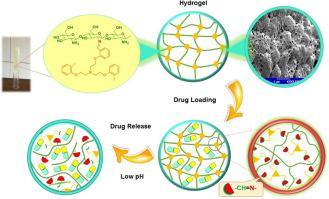Chitosan hydrogels incorporating colloids for sustained drug delivery

The research group at Lyon Unversity hosts research fellow 11 in the TRAIN-HEART network (Mr. Hussein Genedy) who currently work chitosan nanoparticles as drug delivery tool for therapeutic microRNAs in the context of ischemic heart failure. The supervisor (Prof. Alexandra Montembault) recently contributed to a review paper on the potential chitosan hydrogels for sustained drug delivery.
Review abstract: In today's biomedical research, a huge effort is being made towards the development of efficient drug delivery systems, achieving sustainable and controlled delivery of drugs. Chitosan (CS) hydrogels are high water content materials with very relevant biological properties to that purpose. Their use for a local and delayed delivery has already been demonstrated for a wide variety of therapeutic agents. One relatively recent strategy to improve these CS-based systems consists in the insertion of colloids, embedding drugs, within their three-dimensional matrix. This provides a second barrier to the diffusion of drugs through the system, and allows to better control their release. The main objective of this review is to report the many existing complex systems composed of CS hydrogels embedding different types of colloids used as drug delivery devices to delay the release of drugs. The various biomedical applications of such final systems are also detailed in this review.
You can access the full article
HERE
.
Mon, 23 May